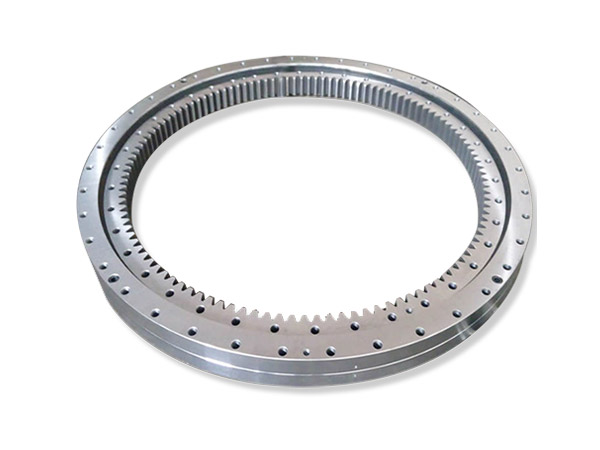What are the common load forms of slewing bearings?
We all know that no matter what the bearing is, it will bear a certain load, and the slewing bearing is no exception. So, what is the load of the slewing bearing? What are the common load forms of slewing bearings? Today, the editor will introduce to you the common load forms of slewing bearings, hoping to help you understand more about slewing bearings.
1. What is the slewing bearing load?
It is only said that the load refers to the external force and other factors that cause the internal force and deformation of the structure or component, and the load of the bearing refers to the limit force that the bearing can bear under the action of the internal force and external force. The load is also called the load, which is used as a slewing bearing. Said that the types of loads it can bear include traditional radial and bearing loads, working loads, temperature loads, etc. The following editor will introduce these loads to you respectively.
2. Common load forms of slewing bearings

(1) Radial and axial loads
In a rolling bearing, when the total plastic deformation is less than one ten thousandth of the diameter of the rolling element at the contact point between the rolling element and the raceway that bears a relatively large load, it has little effect on the normal operation of the bearing.
The static load capacity of the bearing determined under this plastic deformation condition is called the rated static load. The rated static load is determined under the assumed load conditions. For radial bearings, the rated static load refers to the radial load, and the radial load Thrust bearing (angular contact ball bearing) refers to the radial component of the load that loads the half-ring raceway in the bearing, and for a thrust bearing, it refers to the central axial load. The basic static load rating and basic static load rating of the bearing refer to the maximum load that the bearing can bear when it is static or rotating.
(2) Working load
The working load means that the slewing bearing device bears the weight of the machine itself and the weight of the increased weight during work, and then slowly transfers the total weight to the slewing bearing device. Ensure that the slewing bearing device has a steady stream of power and operates normally.
(3) Temperature load
When the mechanical equipment is working, it will generate a certain temperature, and all these temperatures must be absorbed by the slewing bearing device, so that the slewing bearing can withstand all the temperatures. The force of the slewing bearing against temperature is what we call the temperature load.
(4) Wind load
When the machine works in the open air, it is necessary to consider the effect of wind load, including wind direction, rain, thunderstorm weather and so on. The above is only a part of the load that the slewing bearing device bears. In fact, the slewing bearing device needs to bear more load in order to meet all the weight and load of the machine in work. Under normal circumstances, the slewing bearing itself is equipped with mounting holes, lubricating oil and sealing devices, which can meet the different needs of various types of hosts working under various working conditions.

(5) Risk load
That is, the unexpected and unpredictable loads, cross forces, risk forces, unexpected violence, etc. that the slewing bearings and slewing bearings bear. Therefore, the selection of the slewing bearing will have the existence of a safety factor to ensure foolproof.
(6) Dynamic load
Dynamic loads include inertial loads, vibration loads and shock loads. The mass force caused by the change in the magnitude and direction of the movement speed becomes the inertial force. These are all part of the dynamic load.
(7) Static load
The load capacity of the bearing at rest is determined by the allowable amount of plastic deformation. Plastic deformation in rolling bearings is unavoidable. If the allowable amount of plastic deformation is limited, the static load capacity of the bearing is also small; if the allowable plastic deformation is large, the pits generated on the raceway will increase the noise and vibration of the bearing during operation, and improve the running accuracy. Reduced, affecting the normal operation of the bearing.
The above is what the common load forms of slewing bearings are summarized by Xiaobian for you, and all the types of loads that slewing bearings can withstand. We understand that the common load types of slewing bearings include traditional radial load and axial load, working load , temperature load, wind load, risk load, dynamic load, static load, etc. Because of the existence of these loads, the slewing bearing can operate safely and ensure the normal operation of the equipment.


